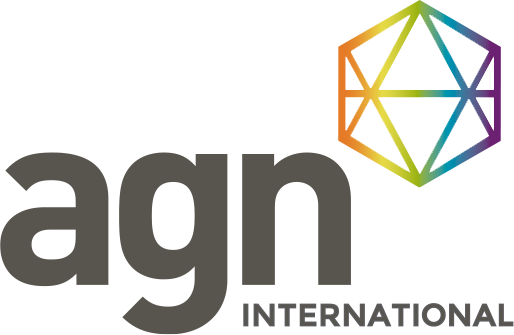Navigating the Ebb and Flow
For many businesses, seasonality is an inherent part of their operational rhythm. Whether you’re a retail store gearing up for the holiday rush, a landscaping company thriving in the summer months, or running a popular food truck in sunny months, managing cash flow through these fluctuations can be challenging. At Froehling Anderson, we’ve helped numerous seasonal businesses navigate these choppy financial waters.
Understanding the Seasonal Cash Flow Challenge
Seasonal businesses face a unique set of challenges when it comes to cash flow management. During peak seasons, revenue flows freely, and it’s easy to feel financially secure. However, this abundance can be deceptive if not managed properly. The real test comes during the off-season when income dwindles, but many expenses continue. Without proper planning, businesses can find themselves in a precarious position, struggling to cover operational costs or missing opportunities for growth and improvement during slower periods.
The key to success lies in viewing your business’s financial year as a whole rather than a series of disconnected peak and off-peak periods. This holistic approach allows you to spread the bounty of your high season to support operations year-round. Let’s delve into some strategies that can help you achieve this balance.
Forecasting: Your Financial Crystal Ball
Accurate forecasting is one of the most powerful tools in a seasonal business’s arsenal. By analyzing past performance data, market trends, and anticipated changes in your industry, you can project your cash flow for the coming year with reasonable accuracy. This forecast becomes your roadmap, helping you anticipate cash shortfalls and plan accordingly.
To create an effective forecast, start by reviewing several years of financial data. Look for patterns in your revenue and expenses. When do sales typically peak? When do they bottom out? Are there consistent ratios between your peak and off-peak periods? Understanding these patterns can help you predict future cash flow with greater accuracy.
Remember, forecasting isn’t a one-and-done activity. Regularly update your projections as new data becomes available. This ongoing process allows you to refine your strategies and make informed decisions throughout the year.
At Froehling Anderson, our Business Advisory & Consulting Services can help you develop robust forecasting models tailored to your specific business needs.
Building a Cash Reserve: Your Financial Safety Net
Once you have a clear picture of your cash flow cycle, the next step is to build a cash reserve. This financial cushion will help you weather the lean months without resorting to costly short-term financing options.
During your peak season, resist the temptation to spend freely. Instead, set aside a portion of your profits to cover expenses during slower periods. The amount you should save depends on your specific business model and cash flow patterns, but a general rule of thumb is to have enough to cover at least three to six months of operating expenses.
Consider keeping these funds in a high-yield savings account or short-term, low-risk investments. This way, your reserve can earn some return while still remaining readily accessible when you need it.
Diversification: Smoothing Out the Peaks and Valleys
While some seasonality may be unavoidable in your core business, exploring ways to diversify your revenue streams can help smooth out cash flow fluctuations. This might involve introducing new products or services that are in demand during your traditional off-season, or targeting different customer segments with complementary offerings.
For example, a food truck that thrives during summer might offer catering services for indoor events during the colder months. A concrete company could pivot to snow removal services in the winter. Similarly, a business reliant on heavy snowfall, like a snowmobile rental service, might offer ATV or bicycle rentals during warmer seasons. Fair vendors could explore opportunities at other local events throughout the year or develop product lines for online sales.
Flexible Expense Management: Adapting to Your Cash Flow Rhythm
Just as your revenue fluctuates seasonally, so too should your expenses. Look for ways to align your cost structure with your revenue patterns. This might involve negotiating with suppliers for more favorable payment terms during your off-season or employing seasonal workers to manage peak demand without incurring year-round labor costs.
Consider which of your expenses are fixed and which are variable. Are there ways to make fixed costs more flexible? For instance, could you negotiate seasonal rates for services you use less during off-peak times? Our Finance and Accounting Solutions can help you analyze your expense structure and identify opportunities for greater flexibility.
Strategic Debt Management: Leveraging Financing Wisely
While it’s generally best to rely on cash reserves to manage seasonal fluctuations, strategic use of financing can sometimes be beneficial. A line of credit, for instance, can provide a safety net for unexpected shortfalls or opportunities.
If you do use financing, plan carefully. Remember, the goal is to use financing as a tool to manage short-term cash flow needs or fuel growth, not as a crutch to support unsustainable operations. Our team at Froehling Anderson can help you evaluate financing options and develop a strategy that aligns with your business goals.
Tax Planning: Timing is Everything
For seasonal businesses, timing can be crucial when it comes to tax planning. Your tax liability is typically highest after your peak season, which may coincide with a period of lower cash flow. Work with a tax professional to develop a strategy that aligns your tax payments with your cash flow patterns.
This might involve making estimated tax payments throughout the year rather than facing a large bill after your busy season. You might also explore opportunities to accelerate deductions or defer income in a way that aligns with your cash flow needs.
Our Tax Services specializes in developing tax strategies for businesses with complex cash flow patterns. We can help ensure you’re meeting your tax obligations while maximizing cash flow efficiency.
Embracing Technology: Tools for Better Cash Flow Management
There are many tools and technologies that can help you manage your cash flow more effectively. From accounting software that provides real-time financial insights to inventory management systems that help you optimize stock levels, technology can be a powerful ally in your cash flow management efforts.
Consider implementing tools that allow you to track key performance indicators (KPIs) related to cash flow. This might include metrics like days sales outstanding (DSO), inventory turnover, or cash conversion cycle. By monitoring these KPIs, you can spot trends and potential issues before they become critical problems.
Mastering the Seasons of Business
Managing cash flow in a seasonal business is undoubtedly challenging, but it’s far from impossible with the right strategies and support. By taking a proactive, year-round approach to cash flow management, you can turn seasonality from a liability into a strength, using the abundance of peak periods to fuel growth and innovation year-round.
Remember, effective cash flow management is not a one-time effort but an ongoing planning, monitoring, and adjusting process. It requires a deep understanding of your business’s unique rhythms and the ability to think strategically about both short-term needs and long-term goals.
At Froehling Anderson, we have over 77 years of experience helping businesses navigate complex financial challenges. Our team of experts can work with you to develop a comprehensive cash flow management strategy tailored to your specific needs. From forecasting and budgeting to tax planning and financial analysis, we’re here to help you master the seasons of your business.
Don’t let seasonal fluctuations hold your business back. Contact Us today to learn how we can help you build a more resilient, profitable business that thrives year-round.



